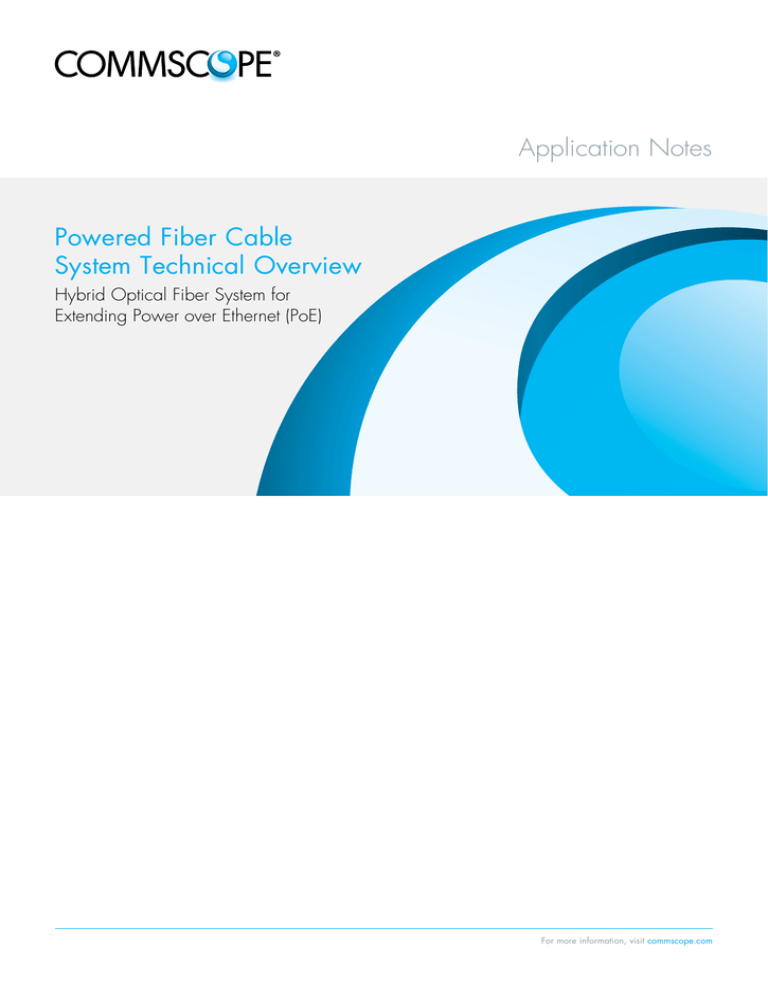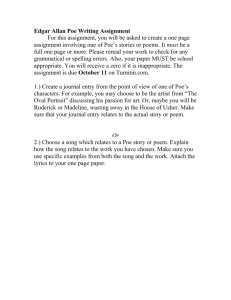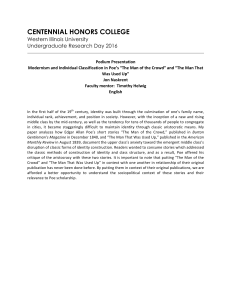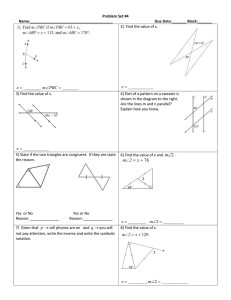
Application Notes
Powered Fiber Cable
System Technical Overview
Hybrid Optical Fiber System for
Extending Power over Ethernet (PoE)
For more information, visit commscope.com
This document is intended to describe the purpose
and function of the CommScope Powered Fiber Cable
System used in conjunction with the PoE Extender. It will
provide an overview of what options are available and
highlight issues to consider for deployment.
Application
Features
Deployment of HD cameras, Wi-Fi access points, optical network
terminals, small cells (picocells, femtocells, metrocells, etc.) and
other network access devices can be difficult, especially in outdoor
environments. Many of these devices accept a Power over Ethernet
(PoE) input for power and communications. However, the PoE distance
limitation of 100 meters can cause difficulties with network planning.
Also, power is not always readily available in the precise locations where
device placement is needed to improve 4G LTE and/or 802.11ac Wi-Fi
coverage for wireless networks, such as on the sides of buildings, lamp
posts, etc. In these situations, it is typically needed to run power to the
desired location prior to installing the devices. Also, any concern about
who pays for that power and how it is monitored requires wireless
network operators to negotiate with local utility companies and building
owners. All of this adds time and money to the installation of network
access devices.
• NEC Class II DC power supply
CommScope has developed a solution that combines power and optical
fiber communications into one system, eliminating the hassles and extra
expense associated with powering typical low-power network devices.
• Wi-Fi access points
• Hybrid optical fiber and copper cabling with outdoor and indoor/
outdoor versions
• Incorporates DC/DC conversion technology to eliminate DC line
powering calculations
• Primary, secondary, and tertiary electrical protection
• Media converter for delivering PoE and PoE+ capability
• SELV and NEC Class II compliant
Applications
• Security cameras
• Wireless network small cells
• Optical network terminals
• Digital signage
• Additional devices needing PoE or PoE+ signal
Wi-Fi AP
Building Wall
HD Camera
Lamp Post
Small Cell
Roof Location
CommScope’s
Powered Fiber Cable
Central Location
Data and Power
2
For more information, visit commscope.com
IDEAL FOR WI-FI ACCESS POINTS,
HD CAMERAS, ONT’S AND
SMALL CELL DEVICES
System Overview
SMALL
CELL
The CommScope Powered Fiber Cable System is a hybrid fiber/copper
system that installs like a “long extension cord” and is comprised of the
following system elements:
PoE
3 km, 15 watts
SWITCH
ROUTER
PoE
Extender
WiFi
AP
• Hybrid Cable
FIBER
PATCH
PANEL
• PoE Extender
PoE+
1.6 km, 30 watts
PoE
Extender
• Safety & Overload Protection
• Power Supply
COMMSCOPE’S
POWERED
FIBER CABLE
-48V DC
POWER
SUPPLY
• Power Transmission Management
UPS
• Cable/Fiber Management
SECURITY
CAMERA
Power output:
PoE+
Fiber: singlemode
or multimode
PoE
Extender
Fiber bundle 1, 2 or 12 x 250μm
• No Electricians
Aramid yarn
• No Landlord/Utility
Negotiations
• No Local Battery Backups
conductor
• NoCopper
Electrical
Engineering
Hybrid fiber/copper cabling
• 12 AWG (2mm) and 16 AWG (1.2mm) conductor size options
• From one to twelve optical fibers, G657
A2 single mode or OM3 multimode
te.com/PoweredFiber
Outer Jacket
• Outdoor rated polyethylene (PE) and indoor/outdoor Low Smoke Zero
Halogen (LSZH/Riser) rated options
• No special cable access tools needed
EVERY CONNECTION COUNTS
• Uses commonly available flat cable installation hardware.
PoE Extender
• DC/DC conversion electronics
• Eliminates electrical engineering calculations by converting
the received voltage to the correct DC voltage level for PoE
output (48VDC)
• Provides three separate levels of electrical protection per
ITU.T K21 and Telcordia GR-1089 to protect the device (small
cell, Wi-Fi AP, camera, etc.) and personnel
• SELV and NEC Class II compliant
• Outdoor rated
• Houses electronics, power termination, fiber management, and
cable termination
• Unobtrusive installation
• Fits in one hand
• Provides a single PoE (IEEE 802.3af-2003) and PoE+
(IEEE 802.3at-2009) compliant output
3
For more information, visit commscope.com
Power and fiber distribution elements
• -48VDC power supply
• 1 rack unit height, 19” or 26” standard rack mounted
• Modular in units of eight cable outputs. Each output capable of
powering a PoE+ (30W) device at distances of 2.5km
• Four modules total per power supply for a total of 32 cables per
power supply
Cable and fiber management
• CommScope offers an array of cable and fiber management options
to suit your network connection needs
• The combiner panel (P/N - BM0333-000) is available to provide
rack-mounted separation and cable management of the power and
optical fiber elements of the Powered Fiber Cable
System Configuration Guidelines
The power supply should be installed in a safe location with access to the
fiber optic network into which small cells or other network access devices
are desired to be connected, and either 120VAC, 240VAC, or 48V UPS
power available.
The system has been designed such that there is no need for DC voltage
drop calculations and/or system input modifications in order to deliver the
correct voltage and power levels to the network device.
Parameters requiring consideration to deploy the
system are:
1. The distance from power supply to the network devices
a. Note: This is important to determine the cable conductor size.
2. The maximum power consumption of the network devices
a. A
lthough the PoE and PoE+ standards allow for maximum device power consumption of
15.4 and 25.5W respectively, the actual power consumption of many devices may be less
than these figures. Therefore, the maximum distances achievable for particular cameras, WiFi APs, etc. may actually be greater than the precise PoE and PoE+ standards.
3. How many devices will be deployed
4. Installation considerations of the cable
a. Is indoor/outdoor LSZH/Riser cabling required for building entries, or is purely outdoor
rated cable sufficient?
b. If the unsupported aerial span length is 10 meters or more, then the cable must be lashed or
otherwise supported for aerial installation.
Please contact CommScope for advice on the number of cables that can be lashed to a
given strand, based on strand size/type and loading conditions.
c. T ypically, it is easier to pull PE-jacketed cable through a duct as opposed to indoor/outdoorrated LSZH/Riser cable.
5. Fiber management options
a. C
ommScope supports a complete portfolio of rack and wall mounted splice and patch
solutions to connect the powered fiber cable system to your fiber network.
4
For more information, visit commscope.com
Power supply options
The CommScope recommended power supply is modular, with expansion
capability to four modules. Each module can support powering up to eight
hybrid cables. If eight or fewer devices are to be deployed initially, then
only one module is needed. To power up to 16 devices, add a second
module. Three modules are required for up to 24 devices. Four modules
are required for up to 32 devices.
such power supplies, as the voltage output of these may vary, affecting the
maximum system distance achievable.
Determine the correct rack width, 19” or 26”
Cable options
Based on parameters one (max distance) and two (power needed), the
cable wire gauge (12AWG or 16AWG) may be selected based on the
table below.
Although CommScope has thoroughly evaluated and tested one particular
power supply from a major manufacturer, other power supplies from
different vendors may be used. Please consult CommScope before utilizing
Central Office
Telecomms
Power supply
Hybrid
Cable
PoE
Extender
Ethernet
Cable
Case 1: A single PoE Extender
PoE or
PoE+ Load
Input Voltage
Cable Gauge
(AWG)
PoE/PoE+
Max Recommended Cable Length
(Meters)
Maximum (57V)
12
PoE
3040
12
PoE+
1560
16
PoE
1190
16
PoE+
610
When using the CommScope recommended power supply, the maximum (57VDC) voltage from the power supply may be assumed for determining
distances supported.
Input Voltage
Cable Gauge
(AWG)
PoE/PoE+
Max Recommended Cable Length
(Meters)
Nominal (48V)
12
PoE
2150
12
PoE+
1100
16
PoE
850
16
PoE+
430
PoE/PoE+
Max Recommended Cable Length
(Meters)
If another 48VDC power supply is used refer to the distances listed for nominal (48V).
Input Voltage
Cable Gauge
(AWG)
Minimum (40.5V)
12
PoE
1530
12
PoE+
780
16
PoE
600
16
PoE+
310
The minimum (40.5V) is only shown for those customers who utilize an unregulated power supply directly from a UPS source. This is not recommended by
CommScope, but provided for illustrative purposes only.
Note: C
ommScope has specifically chosen a power supply that keeps the system within the
SELV and NEC Class II (<=60V DC, supply limited to <=100VA per output channel)
requirements for easy installation. Table 1 represents the resulting system limits. However,
if longer distances or higher power devices then higher voltage, non SELV and/or NEC
Class II power supplies may be selected. The Powered Fiber Cable is designed to support
significantly longer distances and greater power with such input sources. Please consult with
CommScope before attempting to utilize such power supplies.
The option of LSZH/Riser for indoor/outdoor use may be selected as needed.
5
For more information, visit commscope.com
PoE Extender
The PoE Extender is designed to eliminate the electrical calculations normally
needed for determining power level versus distance, copper conductor
sizes, etc. When the PoE Extender is installed with the Powered Fiber Cable,
simply follow the maximum rated distances. The DC/DC conversion circuit
in the PoE Extender automatically compensates for line voltage drop and
corrects to proper PoE output.
The PoE Extender is designed to accept any typically available SFP module
for fiber termination and has been successfully tested with many. If OM3
multimode fiber is selected in the cable, then matching duplex OM3 SFP
modules should be used. If singlemode cable is selected, then either simplex
SMF SFPs or duplex SMF SFPs may be used as desired.
A single PoE and PoE+ compliant hardened RJ45 port is provided for output.
CommScope has designed to power/communicate for a full 100 meters
from this port, as specified in the PoE standards IEEE 802.3af and 802.3at.
So, the PoE Extender may be located anywhere up to this distance from the
device to be powered and still function properly.
CommScope has worked with companies such as Aruba Networks to
design the PoE Extender to fit inside the brackets which hold various access
devices. This creates a more ascetically appealing solution for Wi-Fi access
point deployment in urban situations, hiding the PoE Extender unobtrusively
inside the bracket.
PoE Extender pictured with Aruba AP275 Wi-Fi access point
Installation Considerations
When installing in ducts, care should be given to avoid cable twisting. This
is easily achieved by paying off the cable from a reel. Never pull cable into
ducts/conduit with twists as this reduces the achievable installation length. If
it is not practical to bring a reel of cable to the installation site, then utilize a
standard figure 8 procedure to lay the cable out prior to pulling in duct. This
helps avoid cable twisting.
Cable access
The Powered Fiber Cable is design to access using only a typical pair of
wire strippers and, optionally, a wire cutter or snip. To access the cable,
follow these recommendations:
The PE-jacketed outdoor cable is rated for direct burial. However,
CommScope recommends always installing below-ground cables in
conduit/ducts, as this is better for long-term reliability.
1. Snip the cable end in two places – at the indentations in the cable jacket
between the center fiber element and the two outer conductor elements.
2. Using bare hands, first peel one conductor side away to the
desired length.
For long aerial installation, cable lashing is recommended. The Powered
Fiber Cable is not rated for aerial self-support.
3. While holding the center fiber element in as straight a line as possible,
peel the second conductor element away to the desired length.
4. For the 12 AWG cable, use a proper 12 AWG or 2MM diameter
wire stripper. For the 16AWG, use a 16 AWG or 1.2mm wire
diameter stripper.
5. Strip the two copper elements to an appropriate length, just as accessing
any copper cable.
6. For the center fiber element, simply place the strippers at the desired strip
location, close the wire strippers fully once, then open. Now, by hand
you may pull the center element jacket off, revealing the aramid and
optical fiber(s).
7. Clip away excess aramid as desired for termination.
Cable installation
For duct installation, the PE-jacketed outdoor-only rated cable is
recommended. The LSZH/riser rated indoor/outdoor cable may also be
installed in ducts - however, frictional forces are greater for the indoor/
outdoor cable and, therefore, achievable distances may be less. Standard
cable lubricants may be used to assist with the indoor/outdoor cable for
duct installation.
6
For more information, visit commscope.com
Using One 12 AWG “Backbone” Cable
to Feed Two PoE Extenders
In some cases, it is desired to minimize the number of cables leading from
a head end. It is possible to use one 12 AWG “backbone” cable and
branch into two 16 AWG “feeder” cables, each feeder cable then
powering a PoE Extender.
Case 2: A 12AWG Hybrid Cable Backbone, which splits to Two 16AWG Feeders,
each with a PoE Extender
Central Office
Telecomms
Power supply
12AWG
Hybrid
Cable
Splitter
16AWG
Hybrid
Cable
16AWG
Hybrid
Cable
PoE
Extender
PoE
Extender
Ethernet
Cable
PoE or
PoE+ Load
Ethernet
Cable
PoE or
PoE+ Load
In this scenario, the overall distance supported is reduced. However, this
may still be an attractive option for some installations. In this scenario, refer
to the following distance table:
Input Voltage
Maximum (57V)
Input Voltage
Nominal (48V)
Input Voltage
Minimum (40.5V)
16AWG Feeder
Cable Length (Meters)
Load PoE/PoE+
Max Recommended 12AWG
Backbone Cable Length (Meters)
50
PoE
1460
100
PoE
1410
150
PoE
1360
50
PoE+
440
100
PoE+
390
150
PoE+
340
16AWG Feeder
Cable Length (Meters)
Load PoE/PoE+
Max Recommended 12AWG
Backbone Cable Length (Meters)
50
PoE
1020
100
PoE
970
150
PoE
920
50
PoE+
300
100
PoE+
250
150
PoE+
190
16AWG Feeder
Cable Length (Meters)
Load PoE/PoE+
Max Recommended 12AWG
Backbone Cable Length (Meters)
50
PoE
710
100
PoE
660
150
PoE
610
50
PoE+
200
100
PoE+
150
150
PoE+
90
To terminate the splicing point (“splitter” in the Case 2 diagram), CommScope recommends using the CommScope FOSC 450A closure. This closure has provisions for proper sealing of flat cables, such at
the Powered Fiber Cable.
7
For more information, visit commscope.com
www.commscope.com
Visit our website or contact your local CommScope representative for more information.
© 2016 CommScope, Inc. All rights reserved.
FOSC and all trademarks identified by ® or ™ are registered trademarks or trademarks, respectively, of CommScope, Inc.
This document is for planning purposes only and is not intended to modify or supplement any specifications or warranties relating to CommScope products or services.
AN-318456.2-AE (01/16)






